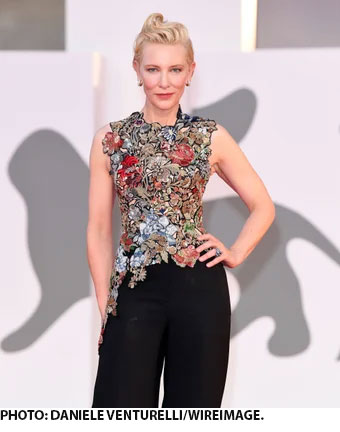Everything you need to know about vintage and second hand clothes!
Vintage
The term appeared in the 15th century and originally referred to the categorization of high quality wines based on fine harvest
(Isn’t that interesting?). However, it evolved in the middle of the 20th century, identifying something from the past that maintains its high quality and value, in the context of saving clothing costs and environmental protection. Even celebrities contribute to this, as Cate Blanchet (actress) on the red carpet of the Venice 2020 festival, who chose in almost all of her appearances, to wear the haute couture of the past, giving the message that sustainable fashion, came to stay!

Second hand
Second hand clothes are the used clothes that you have bought from a second-hand shop (all the clothes, before they are sold, are subjected to the process of sanitation and disinfection). Also, the ones you have inherited from your family or that have been given to you by friends. Most of the pieces are quite cheap and in good condition, while there are also branded and unworn clothes new with their labels. Among the second hand clothes, the consumer can find vintage pieces from well-known and luxury companies, at a much lower cost compared to the original prices. Shopping second hand or vintage clothes is first of all good for the environment, and weakens “fast” fashion companies.
Also, supporting second hand stores, you also support the local economy. And don’t forget that nowadays, wearing second hand clothes makes you an ecologist and super fashionable!
Thrift shop
What is the difference between a thrift shop and a second hand shop? First, the thrift shop is also called a charity shop, as it is a kind of social enterprise. They mainly sell used products such as clothes, books, music albums, shoes, DVDs, toys and furniture, donated by members of the public and are often staffed by volunteers. Expenses include operating expenses and rental of the building. After the expenses are paid, all the remaining profits are used for the charitable purpose of the organization. That’s why clothes are even cheaper, as it is not a commercial business, like a second hand shop.
However, while in a thrift shop you can donate your clothes for the purpose of the store, second hand stores buy their clothes from certified suppliers and they usually don’t accept clothes from individuals, because they don’t have the necessary equipment for the disinfection process.

Nowadays, wearing second hand clothes makes you an ecologist and super fashionable!
Pricing
Finally, in second hand stores you will see a variety of prices. That’s because pricing depends on the quality, the condition and the brand of the clothes.
You need to know …
There are many good reasons to buy second hand clothes. So if you are not already a fan of second hand, I would suggest you to try the “treasure hunt” as I call it, and you will discover rare pieces that will give you a special and unique style!




